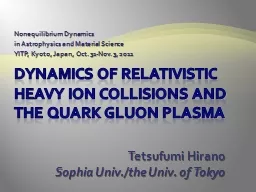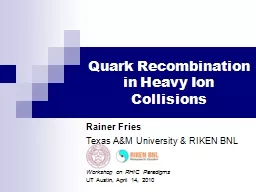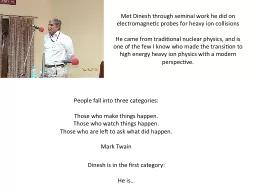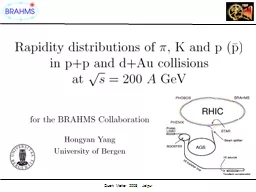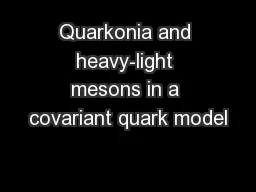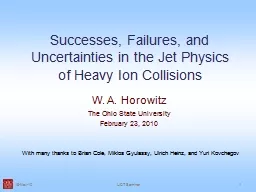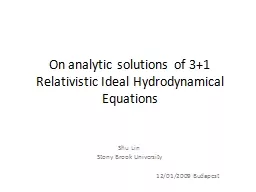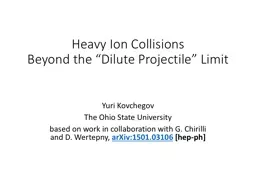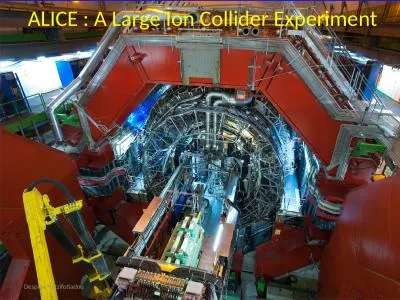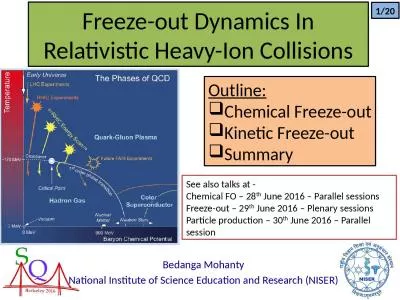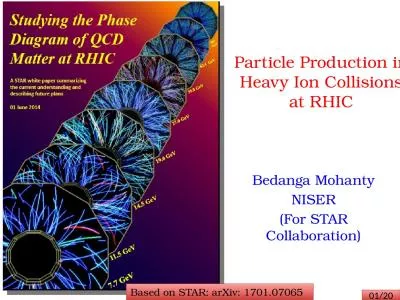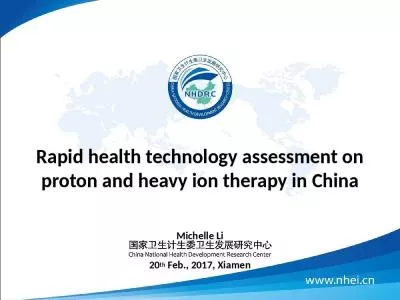PPT-Dynamics of Relativistic Heavy Ion Collisions and THE Quark
Author : phoebe-click | Published Date : 2017-12-08
PlasMA Nonequilibrium Dynamics in Astrophysics and Material Science YITP Kyoto Japan Oct 31Nov 3 2011 Tetsufumi Hirano Sophia Univ the Univ of Tokyo Outline Introduction
Presentation Embed Code
Download Presentation
Download Presentation The PPT/PDF document "Dynamics of Relativistic Heavy Ion Colli..." is the property of its rightful owner. Permission is granted to download and print the materials on this website for personal, non-commercial use only, and to display it on your personal computer provided you do not modify the materials and that you retain all copyright notices contained in the materials. By downloading content from our website, you accept the terms of this agreement.
Dynamics of Relativistic Heavy Ion Collisions and THE Quark: Transcript
Download Rules Of Document
"Dynamics of Relativistic Heavy Ion Collisions and THE Quark"The content belongs to its owner. You may download and print it for personal use, without modification, and keep all copyright notices. By downloading, you agree to these terms.
Related Documents

